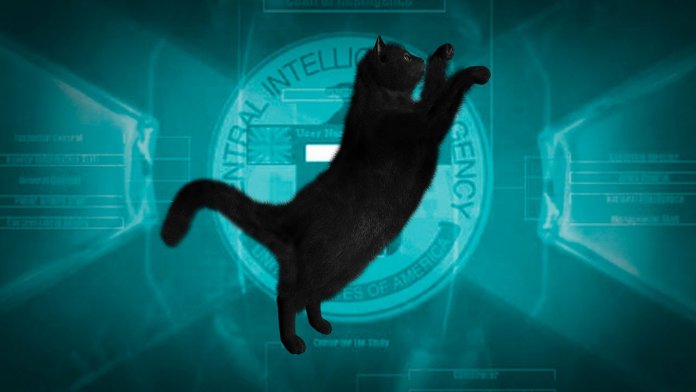For centuries, intelligence services of various states have been collecting information about cases in neighboring countries. In the ancient world, espionage was the exclusive domain of humans. However, with the dawn of the industrial era, spies began to recruit (usually against their will) members of the animal kingdom to gain an advantage in gathering information quickly and quietly.
Some stories of animals exploited for espionage purposes serve as sobering reminders of how far people can go to get dirt on their enemies. Other examples of spy animals simply confirm the well-known fact that people who work under intense pressure are unambiguously predisposed to look for enemies lurking in every shadow.
Here are the top 10 animals used for intelligence purposes
10. Atomic lizards
 In February 2018, a senior military adviser to the supreme leader of Iran told Western media a very interesting and unusual story. He was asked about the recent arrests of several environmentalists who had traveled to Iran. Hasan Firuzabadi said he was unaware of the arrests in question, but claimed that foreigners were using animals to spy on Iran's secret nuclear facilities.
In February 2018, a senior military adviser to the supreme leader of Iran told Western media a very interesting and unusual story. He was asked about the recent arrests of several environmentalists who had traveled to Iran. Hasan Firuzabadi said he was unaware of the arrests in question, but claimed that foreigners were using animals to spy on Iran's secret nuclear facilities.
According to him, activists who came to Iran ostensibly to collect donations for Palestine took with them "several species of desert reptiles, such as lizards and chameleons," which were somehow modified to attract "atomic radiation." Obviously, the lizards were supposed to serve as beacons that could guide spies to Iran's secret uranium facilities. Firuzabadi also told the media that the Iranian government took this discovery of super-powerful atomic lizards as evidence of Western interference in its nuclear program.
9. The Dolphin Who Knew Too Much
 For decades, different countries have trained dolphins to detect underwater mines. These intelligent cetaceans are more adept at finding explosive devices than the most modern equipment. Perhaps it was this well-known information that prompted Hamas to suspect one of the dolphins of espionage in 2015.
For decades, different countries have trained dolphins to detect underwater mines. These intelligent cetaceans are more adept at finding explosive devices than the most modern equipment. Perhaps it was this well-known information that prompted Hamas to suspect one of the dolphins of espionage in 2015.
Initial reports were controversial as to whether Hamas hijacked an Israeli Dolphin-class submarine or a real dolphin. But army radio Hamas quickly cleared up the situation, assuring its audience that the spy caught was a marine mammal equipped with cameras and other information gathering devices. He may have been monitoring the training camp of Hamas fighters. What happened to the dolphin is unknown.
While the Israeli government faces many challenges when attempting international cooperation with other regional powers, it appears to be well versed in cross-service cooperation.
8. CIA Crows
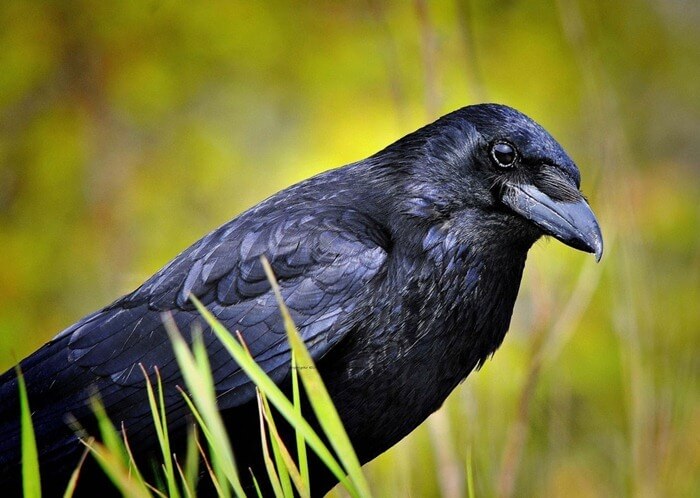 Bob Bailey, the same man who first taught dolphins to hunt for mines, was the first person in the United States who also participated in the CIA program to turn ravens into professional listening devices. His pets were trained to leave listening devices on windowsills and eaves, as well as open drawers and even carry away heavy objects (such as a folder with documents). Who would suspect an ordinary black bird of espionage?
Bob Bailey, the same man who first taught dolphins to hunt for mines, was the first person in the United States who also participated in the CIA program to turn ravens into professional listening devices. His pets were trained to leave listening devices on windowsills and eaves, as well as open drawers and even carry away heavy objects (such as a folder with documents). Who would suspect an ordinary black bird of espionage?
Although crows have always been known as cunning creaturesIt was only with the help of Bailey and the people from IQ Zoo that these feathered troublemakers became truly dangerous. However, experiments with them were curtailed in the mid-70s of the last century.
7. Sharks from the Mossad
 Sharks are scary enough on their own. But when these living death machines are guided by a human hand, the results can be truly dire.
Sharks are scary enough on their own. But when these living death machines are guided by a human hand, the results can be truly dire.
It is possible that the 2010 shark attacks off the coast of Egypt were not accidental. This is the opinion of Mohammed Abdel Fadil Shusha, the governor of South Sinai. The motive for the attacks? Striving to disrupt the summer tourist season in popular Sharm El Sheikh.
However, according to scientists, sharks do not seek to attack people at all costs, despite the fact that the opposite is stated in Hollywood films.
To his credit, the governor of Shusha also said that further research is needed to determine if one tourist died and four other holidaymakers were injured due to the attack of the Mossad man-eating sharks. It is possible that the sad events were due to the carelessness of people who wanted to take pictures near sea predators, or a shark with a damaged fin that could not keep up with faster prey hunted people.
6. Spy Squirrels
 In the summer of 2007, no tree in Iran was safe as members of the Iranian police were looking for furry Western spies. At least 14 Iranian squirrels have bid farewell to the boring life of nut gatherers and, spurred on by the Washington hawks, embarked on a career as a super agent. They were equipped with modern eavesdropping devices and fired near one of Iran's nuclear facilities.
In the summer of 2007, no tree in Iran was safe as members of the Iranian police were looking for furry Western spies. At least 14 Iranian squirrels have bid farewell to the boring life of nut gatherers and, spurred on by the Washington hawks, embarked on a career as a super agent. They were equipped with modern eavesdropping devices and fired near one of Iran's nuclear facilities.
It is unclear if these furry secret agents were taken away in tiny handcuffs, but the story of the detention of spy squirrels was confirmed by Iran's chief law enforcement officer Ismail Ahmadi-Mukdam.
The fate of the squirrels remains uncertain, and Iran does not demand preferences from the United States for the release of the tailed hostages.
5. Suspicious eagles
 With superior eyesight and powerful claws, eagles would be ideal weapons of war if properly trained. Most likely, the awareness of the threat these birds of prey could pose to Lebanese national security made the two patriotic hunters "shoot down" the high-flying eagle. He was circling the city very suspiciously. And what a fortune: when the bird collapsed to the ground, a gps-beacon of one of the Israeli universities was found on it.
With superior eyesight and powerful claws, eagles would be ideal weapons of war if properly trained. Most likely, the awareness of the threat these birds of prey could pose to Lebanese national security made the two patriotic hunters "shoot down" the high-flying eagle. He was circling the city very suspiciously. And what a fortune: when the bird collapsed to the ground, a gps-beacon of one of the Israeli universities was found on it.
The cautious hunters quickly turned the eagle over to the authorities so that they could conduct a thorough investigation. Surely this event created despair in the hearts of the sinister Mossad agents who sent the spy bird on such an ill-fated mission.
4. Acoustic cats
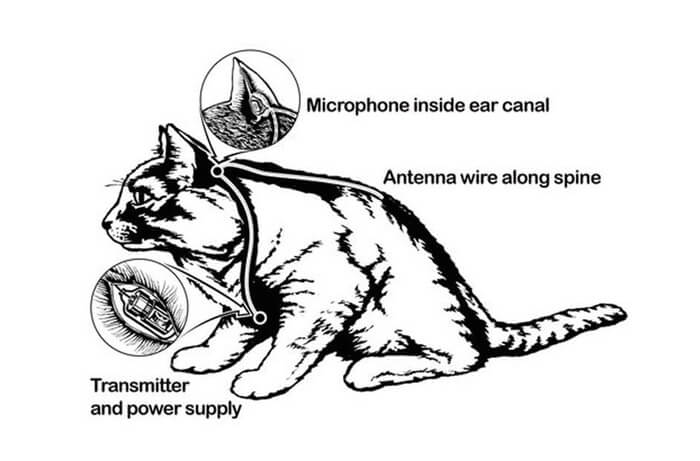 Cruelty towards animals is not uncommon among the "kings of nature." But even to the most sadistic psychopath, the idea of cutting up a cat and placing a microphone inside it would seem disgusting and illogical. Unless, of course, this sadist worked for the CIA, on a project called Acoustic Kitty.
Cruelty towards animals is not uncommon among the "kings of nature." But even to the most sadistic psychopath, the idea of cutting up a cat and placing a microphone inside it would seem disgusting and illogical. Unless, of course, this sadist worked for the CIA, on a project called Acoustic Kitty.
In the early 1960s, the CIA decided to try its hand at a task that many throughout history have tried and failed to accomplish: train a cat to do what it did not want to do.
The Acoustic Kitty test subject was different from normal cats for several reasons. It had an antenna running through its tail and a radio transmitter at the base of its skull. This CIA pet cost US taxpayers $ 20 million.
Unfortunately for the CIA, the "wiretapping cat" died on her first mission. No, it was not revealed.The animal ran across the road and a taxi was hit. It is not known whether a KGB agent was driving the car.
In 1967, the project was declared a failure and closed.
3. Call sign "vulture"
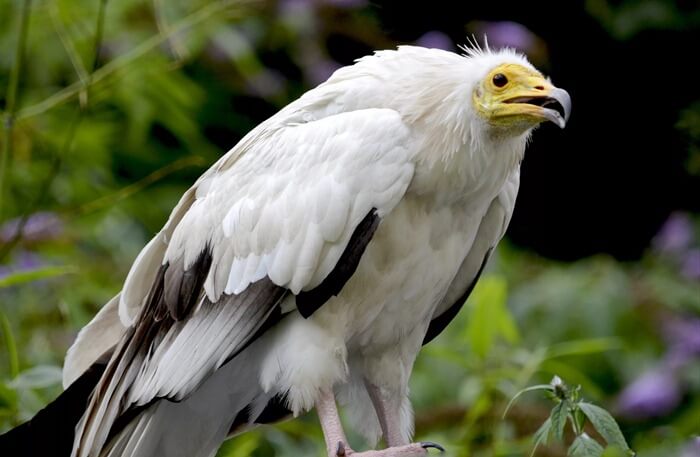 The life of a vulture is full of difficulties. Constantly hungry, these flying lovers have to endure a lot to make ends meet. But some vultures have to endure more than others because they are wrongly accused of spying on foreign powers.
The life of a vulture is full of difficulties. Constantly hungry, these flying lovers have to endure a lot to make ends meet. But some vultures have to endure more than others because they are wrongly accused of spying on foreign powers.
One vulture made a fateful mistake: he escaped from a nature reserve in Israel and crossed the Lebanese-Israeli border. Suspecting a transmitter on the bird's tail, the locals shot down the vulture, praising their skillful capture of an obvious Israeli secret agent. On the paw of the "Mossad envoy," they found a gps tracker with the Tel Aviv University markings.
After the UN peacekeepers interceded for the vulture, Lebanese officials released the winged scavenger.
2. Pigeon photographers
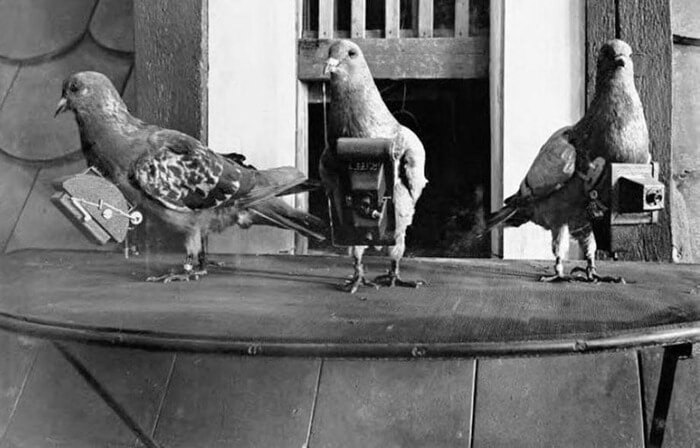 Pigeons have long been used for delivering messages... Small, invisible and having an incredibly accurate homing instinct, these birds were irreplaceable when there was no Internet or even the Russian Post. But in the early 20th century, people started using pigeons for a completely different task: photography.
Pigeons have long been used for delivering messages... Small, invisible and having an incredibly accurate homing instinct, these birds were irreplaceable when there was no Internet or even the Russian Post. But in the early 20th century, people started using pigeons for a completely different task: photography.
It all started in 1907, when the German pharmacist Julius Neubronner sent medicines (up to 75 grams) by means of pigeons, and then decided to tie the camera to one of his birds in order to find out its usual route. He created about 10 different lightweight camera models.
And then the German military began equipping pigeons with cameras as part of their spy program during World War I. During the flight, the birds could take up to 200 photographs. However, aviation was developing rapidly and it was decided to abandon experiments with pigeons.
After World War II, the CIA adopted pigeon photography and refined the idea. A battery-powered camera was used for espionage.
But please don't try this at home. Even using one of the best action cameras "In conjunction" with a pigeon will most likely lead to the loss of the device.
1. Dead rats tell "fairy tales"
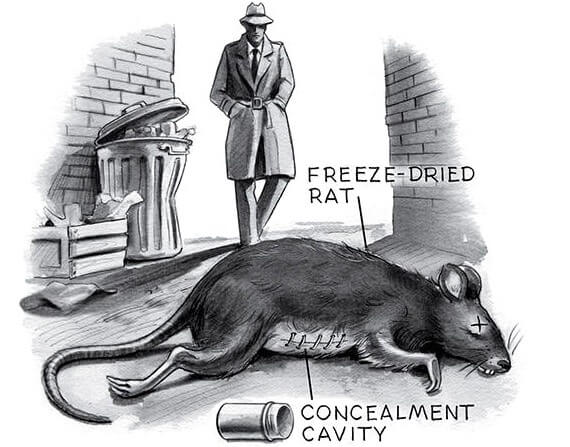 Rats are quite disgusting creatures without human intervention. However, CIA agents were so successful in overcoming their aversion to these creatures that they even learned to use the corpses of dead rodents. Of all our rating, this is perhaps the weirdest and most disgusting way to use animals for spy missions.
Rats are quite disgusting creatures without human intervention. However, CIA agents were so successful in overcoming their aversion to these creatures that they even learned to use the corpses of dead rodents. Of all our rating, this is perhaps the weirdest and most disgusting way to use animals for spy missions.
Poured with sauceTabasco"To scare away predators, the corpses of the rats were gutted and filled with secret messages for special agents. The disgust that the common man has for rats served as a reliable insurance against the fact that someone might reveal the "couriers" of the CIA.
So if you see a dead rat on the side of the road, you have one more reason not to pick it up. Suddenly, inside this carcass there is information that is not intended for prying eyes.

